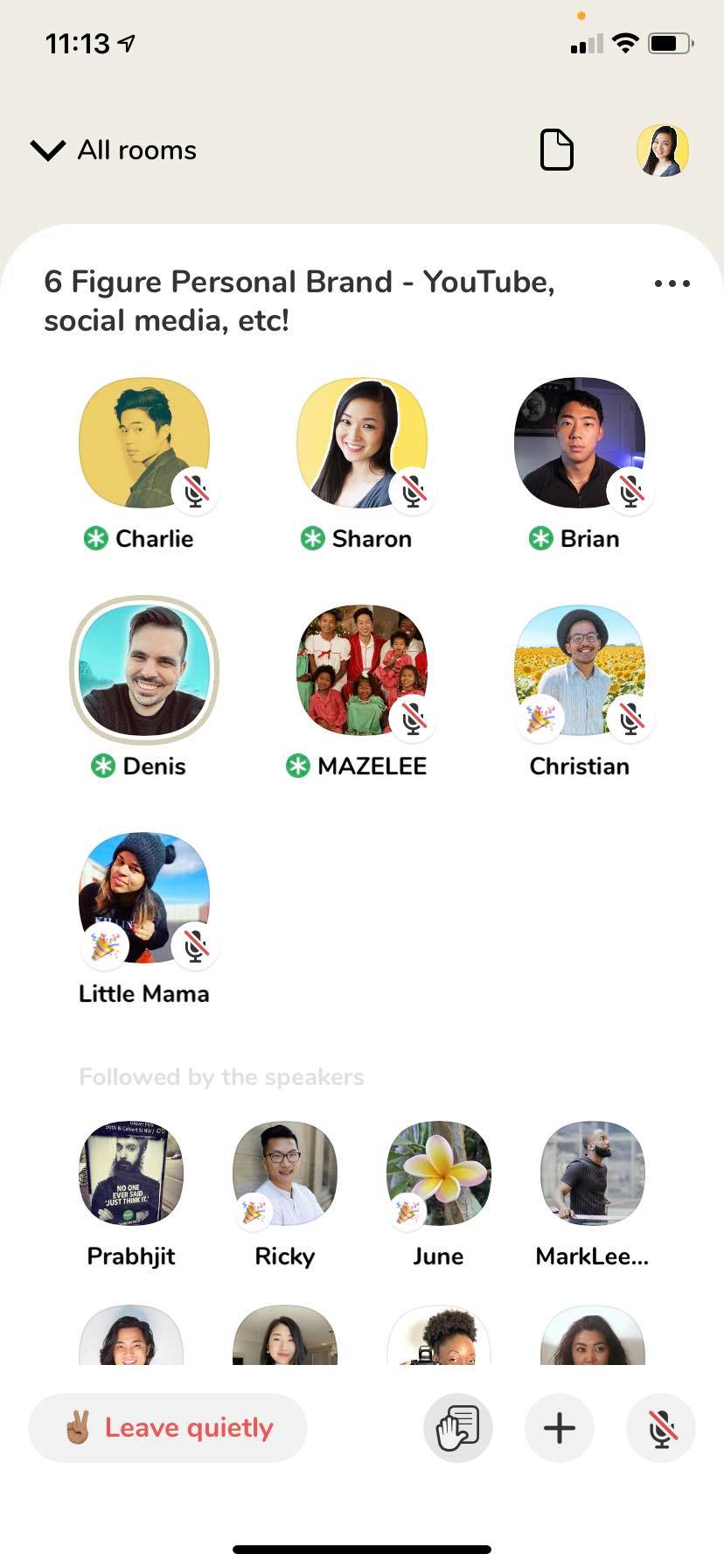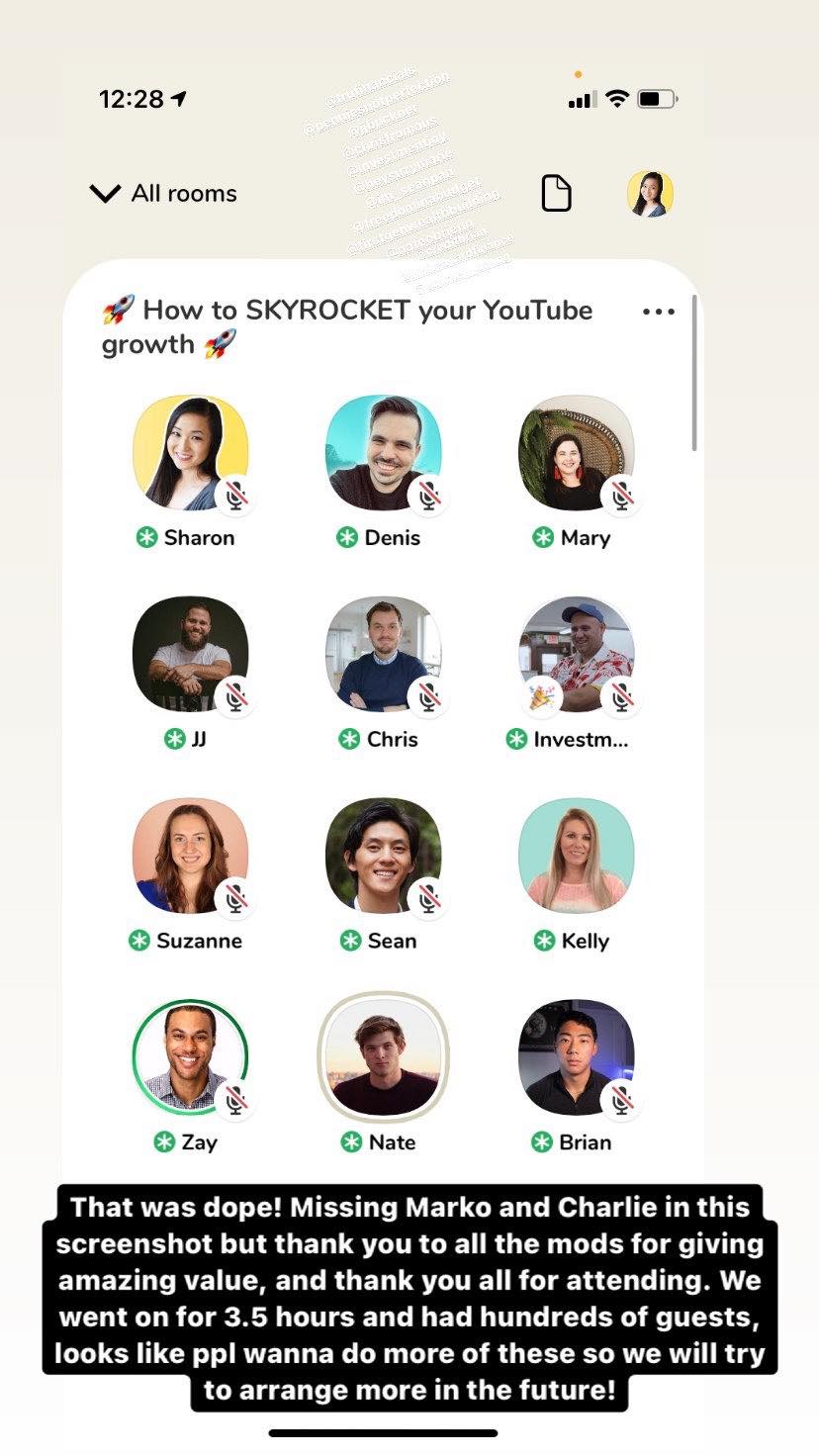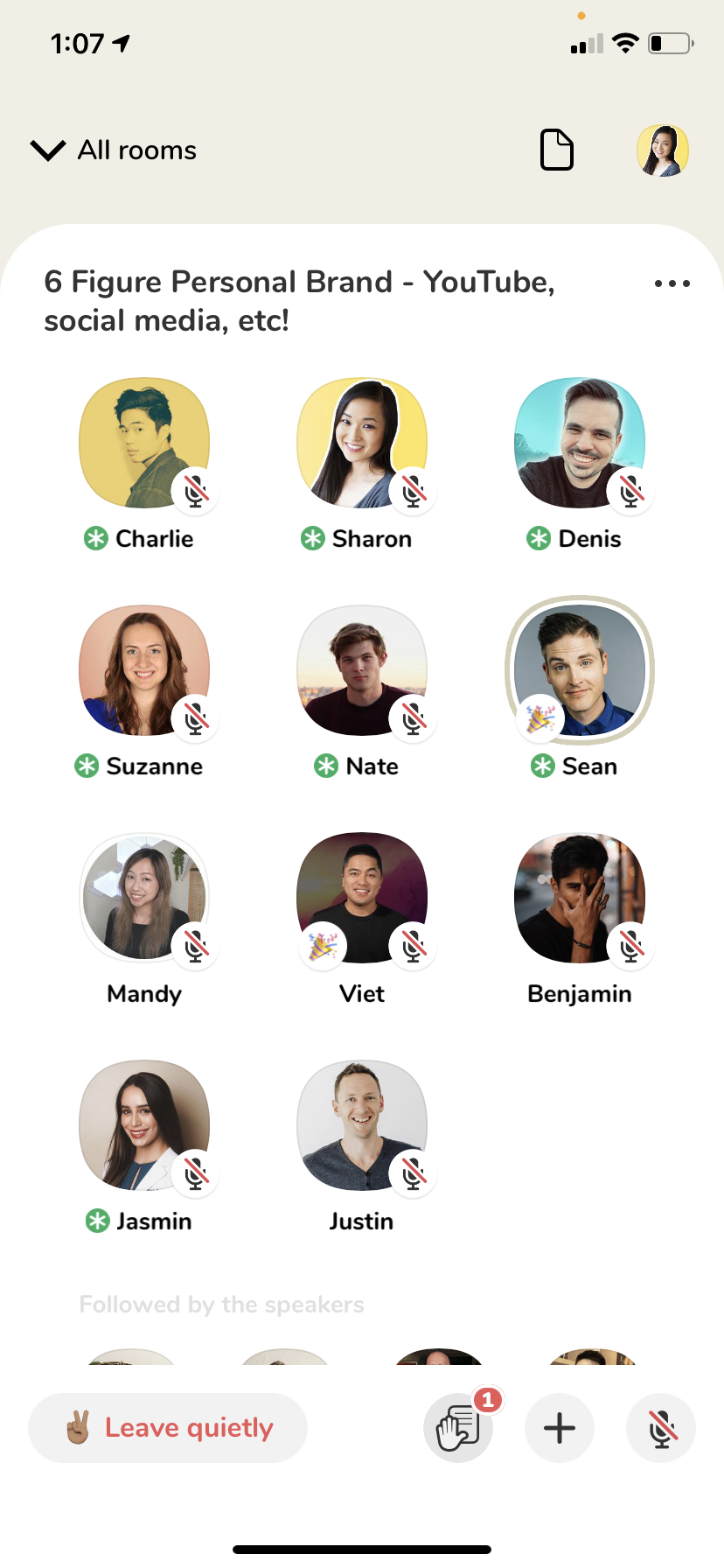In this post I want to talk about how to start a Clubhouse room and introduce 4 successful Clubhouse room ideas. To be honest, I’ve been to plenty of awkward rooms, but I’ve also attended many successful ones as well! I think the best rooms bring a lot of value – and the format of rooms is extremely important for success.
But first of all, if you don’t know what Clubhouse is, make sure to check out this rundown of the app. I go over pretty much every feature in the Clubhouse. After you’ve gotten the overview, this should be the next post you read through :). We’ll go over some of the best formats for a successful Clubhouse panel.
How to Start a Clubhouse Room OVERVIEW
Before we begin, let’s go over the basics of how to host a room.
In order to start a room, you can tap the bottom green button when you’re on your feed. When creating these rooms make sure to tap “add a topic” and niche down on what you’re going to cover in the room.
OR you can schedule a room by going to your events feed (the calendar at the top bar) and then tapping the top right corner to schedule. That way you’re scheduling a future event, which should notify your followers as well when you’ve started it and when it’s about to happen.
You’ve started the room. What now?
When you’re in rooms you’ll see there is a “stage” where people are allowed to speak, and there’s also an audience level where people can listen in.
The stage has moderators (with the green asterisk) as well as speakers (but not mods). On stage, you can mute and unmute yourself when speaking.
As a moderator you will have the ability to:
- BRING PEOPLE ON STAGE – People will start raising their hands, and you’ll get notifications at the top when it happens. Approve them or dismiss them to allow people on stage. You can also approve pending requests from the button with the hand + paper as shown in the below image.
- MOVE PEOPLE DOWN TO AUDIENCE LEVEL – You will also be able to tap speakers and move them down to audience level so that they won’t be able to speak in the room.
- MUTE USERS – If people are inappropriate or if they forget to mute their mics, you can tap their profile pictures and press the microphone button on them to mute.

The audience level will be separated by people followed by speakers as well as others in the room. When in audience level, you can raise your hand to speak by tapping the hand on the bottom right (but sometimes mods may turn off hand raising). If the mod accepts you, you’ll be able to enter the stage and speak.
Everyone in the room can invite others to join. Press the + button to ping people to join the room (it will pop up as a notification for people).
How to Start a Clubhouse Room – 4 Successful Clubhouse Room Ideas
Alright, now you understand the basics of hosting a Clubhouse room. But the hard part is how to host a SUCCESSFUL room, and that’s where this comes in.
Let’s discuss 4 different formats I like when it comes to quality Clubhouse rooms.
1. Panel style – 1 MC & Multiple Moderators
So the first option is the panel style room where there is 1 MC and multiple moderators. This is how I recently hosted my event and it turned out great:

PS – Follow me on Clubhouse @Sharontseung for entrepreneurship, investing, passive income, and financial freedom tips!
How this works is you have an MC, basically the main mod, who is in charge of bringing people up to speak and keeping the flow of the room going. The MC might let everyone know the format of the room, and let everyone know to follow the moderators to get notified of future events. This person will kick-off, help manage, and end the room as well.
You’ll have cohosts – a bunch of moderators / a panel of experts – who are on-call, ready to answer questions.
As the room goes on, people in the audience will raise their hand to ask questions around the topic you’re teaching. The MC will allow around 3-5 people from the audience to go on stage, and as people are ready to ask their question, the MC will call each person by name.
Once people finish with their question and answers, the MC will move them down to audience level.
These panels may go on for hours if there is a lot of demand for the knowledge that the panel is spreading. This is probably my favorite method of hosting because it’s extremely valuable for people and is less awkward. The con is it usually takes more preparation to host.
2. Panel style – Multiple Moderators – All MCing
This method is similar to the above method, however, there is no clear MC, so everyone is in charge of keeping the flow going. It ends up naturally becoming a panel as people are moved up and down to audience level. I was a mod for one of these rooms, and it turned out great. However, I believe it could have been organized better. We would fluctuate between conversing between ourselves as well as answering questions, so there was no clear order. However, I believe this method could work if the panelists help reset the room constantly, letting the audience know that they will switch from allowing audience members to speak and conversing amongst themselves to cover topics among mods.
Here’s an example in which all of us were sort of MCing because there was no clear format, alternating between speaking amongst ourselves and prompting the crowd to ask questions:

3. Conversation Style – Multiple Moderators – Everyone Speaks Except Random Viewers
Most people use the conversation style format for rooms in which they let everyone speak. I feel like these rooms work better when it stays small with a set amount of people and you’re just having a group chat. This could almost be a mastermind call, or a group chat amongst good friends. I like these small rooms, but they work better when they’re private calls. If it’s a mastermind that people can listen in on, then it could work as a public room in which people are just gaining insights from your chat.
If you bring in too many people on a conversation-style room, it may be too hard to manage. If you decide to open the flood gates, you would probably want to switch to style 2 or 1 that I’ve mentioned above.
4. Podcast Style – 2 People / 1 Person
I’ve seen people like Pat Flynn host a podcast style type of room, in which him and sometimes one other person chat about a specific topic. The last room I attended was around the topic of Clubhouse – how to use it and how it all works. He was actually streaming a YouTube video of his Clubhouse room to teach people how to use Clubhouse. Normally you are not allowed to record rooms because it is against Clubhouse policies. However, since it was just him and one other he was able to get permission so it was okay to do so.
These rooms probably work best if you have a lot of influence and people want to listen. The reason is that you can get more attendance if you include multiple moderators because it will notify their followings. If it is just you speaking, you will have to see if your influence alone will prompt a lot of people to listen in.
Conclusion
I hope this was a solid breakdown of the different Clubhouse formats I’ve seen happen on the platform. Now that you’ve gotten a good rundown of how to start a Clubhouse room and how to successfully host rooms, check out this post on how to build a following on Clubhouse!
PS make sure to follow me on Clubhouse @sharontseung for more awesome tips. And if you have any other ideas of how to host a successful Clubhouse room, please let me know in the comments below!
If you’re also interested in more Clubhouse information, check out these posts:



Comments 1
Hi Sharon,
Thanks for the tip.
It’s appreciated here
Regards